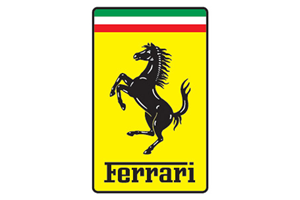


This edition of the Ferrari 308 GT/4 3.0L V8 is the 5 speed / Manual version and was first brought out in 1973. This was at around the same time as the introduction of the 1973 Monteverdi Hai 450 GTS and the 1973 Ferrari 365 GTB/4 Daytona.This particular Ferrari 308 has a 2927cc Naturally Aspirated Petrol powerplant with 8 cylinders in a V formation.
The 308 shares its Petrol V8 engine configuration with the likes of the 2023 Dodge Challenger SRT Demon 170 and the 2023 Ferrari SF 90 XX Spider 4.0 V8 Turbo. If you're looking for other fast cars which share the 308's Rear Wheel Drive, Coupe combination then how about the 1982 Fiat X1/9 1.5 8V or the 1965 Aston-Martin DB6 1965.
Weighing in at 1265 kgs (2788 lbs) this makes the Ferrari 308 GT/4 3.0L V8 in the same weight category as the 2023 McLaren 750S 4.0 V8 Twin Turbo or the give or take 50kg.
In terms of power the 2927cc 16V V8 engine produces 252 bhp (187 kW) @ 7600 rpm similar to the 2022 Hyundai i30 N Performance 2.0 Turbo (276 bhp) or the 2022 Mini Cooper John Cooper Works Cabrio 2.0 Turbo (228 bhp).
The Naturally Aspirated V8 throws out 209 lb-ft (283.3 Nm) @ 5000 rpm placing it with cars of similar torque performance figures such as the 2020 Abarth 695 70th Anniversario 1.4 Turbo (184 lb-ft) or the 2020 Audi A1 A1 Sportback 35 TFSI S tronic S line (184 lb-ft).
If one combines the weight with power or torque performance for the Ferrari 308 you can get a better idea of it's real world performance.
![Porsche 911 Carrera 996 - [1997] image Porsche 911 Carrera 996 - [1997] image](/editionimages/464.jpg)
The 1997 Porsche 911 Carrera 996 (224.2 bhp per ton) has similar Bhp Per Ton stats as the Ferrari 308.
The Ferrari 308 has a Power to weight ratio of 199.2 bhp per ton and 165.2 lb-ft per ton. Bhp Per Ton figures of the 1973 308 competing with the 1997 Porsche 911 Carrera 996 (224.2 bhp per ton) or the 2011 Maserati GranCabrio Sport 4.7 V8 (224.2 bhp per ton).
If you agree with the late great Carroll Shelby then arguably an even better indicator of potential performance, Torque. Use weight as well and you end up with - Torque per ton, with the Ferrari 308 generating around 165.2 lb-ft per ton. If you're curious as to what other cars have as much torque to weight then look no further than the 1985 Ford Mustang GT 5.0 V8 (190.1 lb-ft per ton) or the 2010 Alfa-Romeo Giulietta 235 Cloverleaf (190.1 lb-ft per ton).
With a 0-60mph time of 6.70 secs or a 0-100km/h (0-62mph) of 6.9 secs, this made the Ferrari 308 GT/4 3.0L V8 as fast as the 2020 Ford Puma ST 1.5 Turbo (6.70 secs) the 2017 Maserati Levante 3.0 V6 Diesel (6.70 secs) the 2012 Abarth 695 Edizione Maserati 1.4 Turbo (6.70 secs) the or the 2012 Dodge Charger SXT Blacktop 3.6L V6 (6.70 secs). This Ferrari 308 GT/4 3.0L V8 is also faster than the 2017 Dodge Charger SXT AWD 3.7 V6 (6.80 secs) the 2015 Renault Megane Energy TCe 205 GT 1.6 Turbo (6.80 secs) the 2012 Mini Cooper John Cooper Works Countrman (6.80 secs) the and the 2010 Volkswagen-VW Scirocco 2.0 TSI DSG (6.80 secs).
When talking about the performance of the Ferrari 308 on the drag strip it can reach a quarter mile in an estimated 14.03 secs @ 97.5 mph. Similar performance down the quarter mile can be found with the the 1992 BMW 8 Series 850 CSi 5.6 V12 E31 (14.00 secs), the 2014 Bentley Mulsanne Speed 6.8 V8 Turbo (14.00 secs), and the 2003 Ford Mustang Mach 1 (14.01 secs).
Modern performance cars are often artificially restricted to 155mph. The 1973 version of the Ferrari 308 GT/4 3.0L V8 has a maximum speed of 160mph.
If maxing out your car on the AutoBahn is your thing and you're wondering what's faster than the 1973 Ferrari 308 GT/4 3.0L V8 then how about the 2018 Porsche Boxster T 2.0 Turbo PDK 982 (171 mph), the 2018 Porsche Boxster T 2.0 Turbo 982 (171 mph), or the 2013 Jaguar F Type S 3.0 V6 (171 mph).










McLaren F1 6.1 V12
Engine: Naturally Aspirated Petrol | 6064cc 48v V12
Top Speed: 240 mph
0-60mph: 3.20 seconds

Porsche 911 S
Engine: Naturally Aspirated Petrol | 1991cc 12v F6
Top Speed: 220.4 kph
0-100kph: 8.3 seconds



















